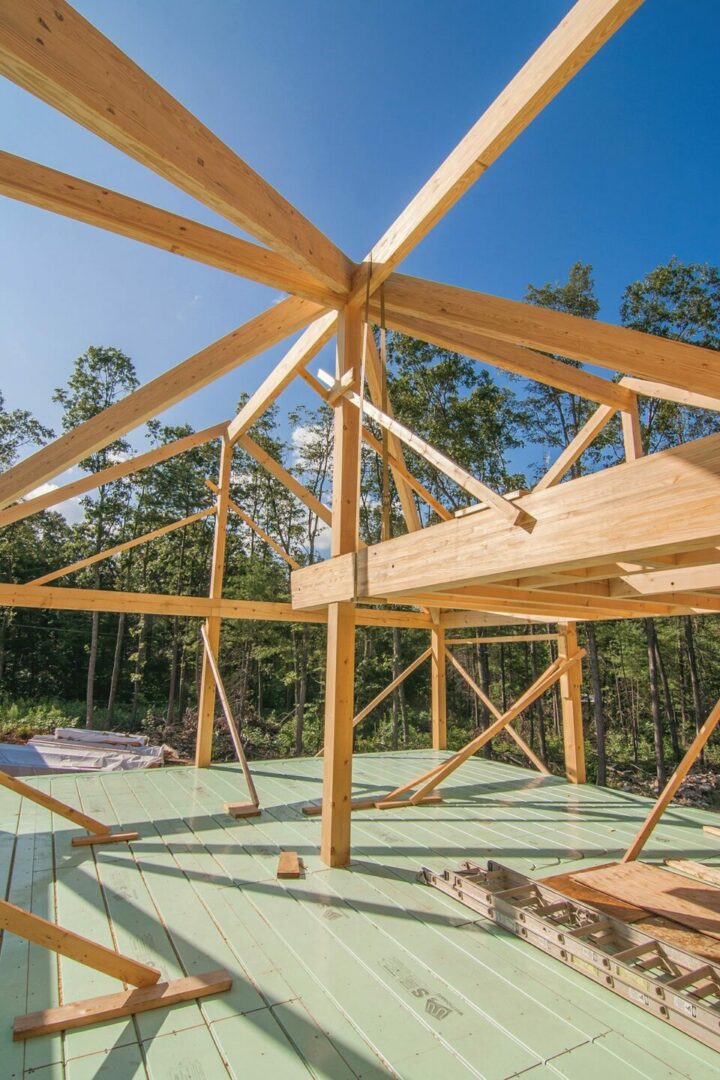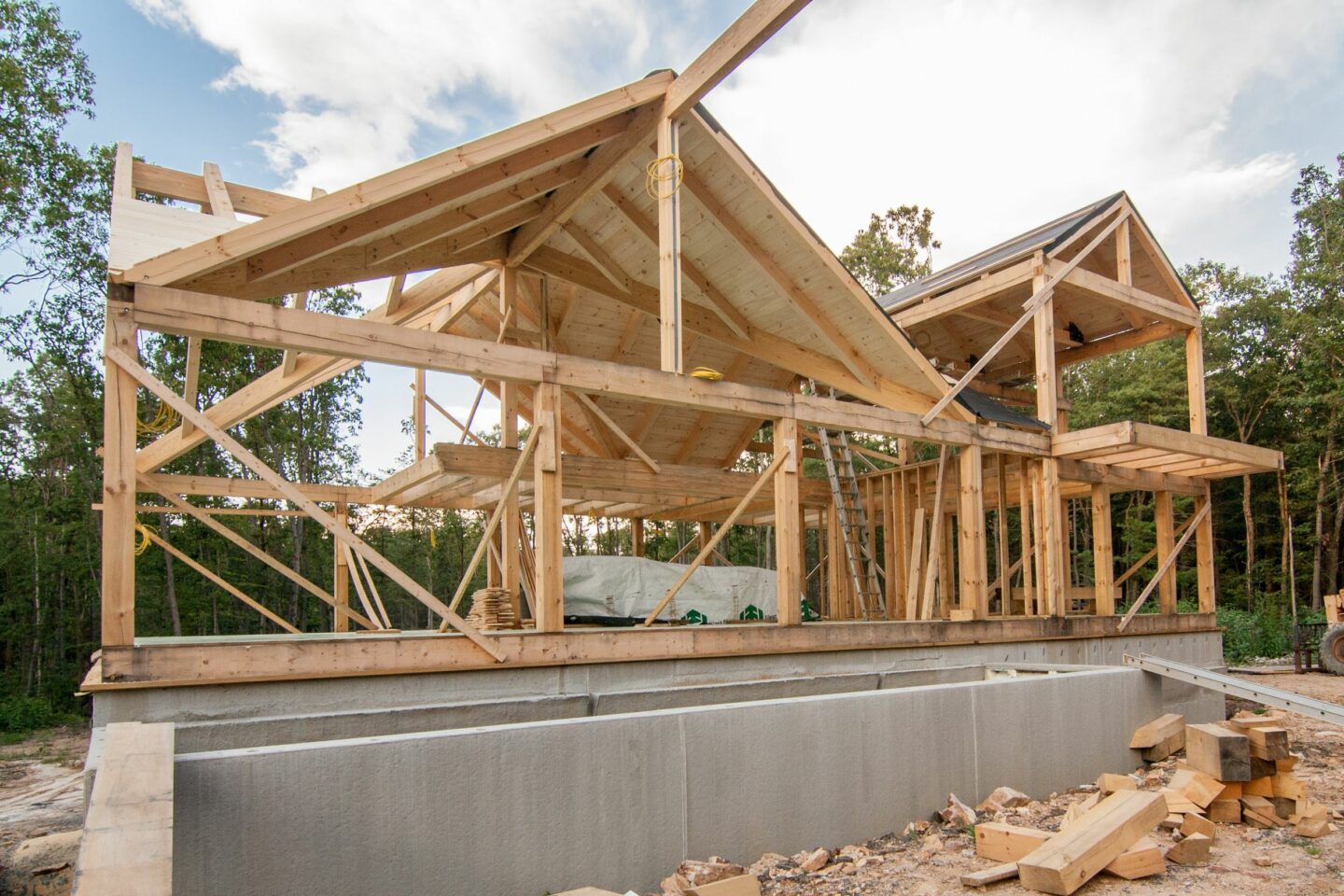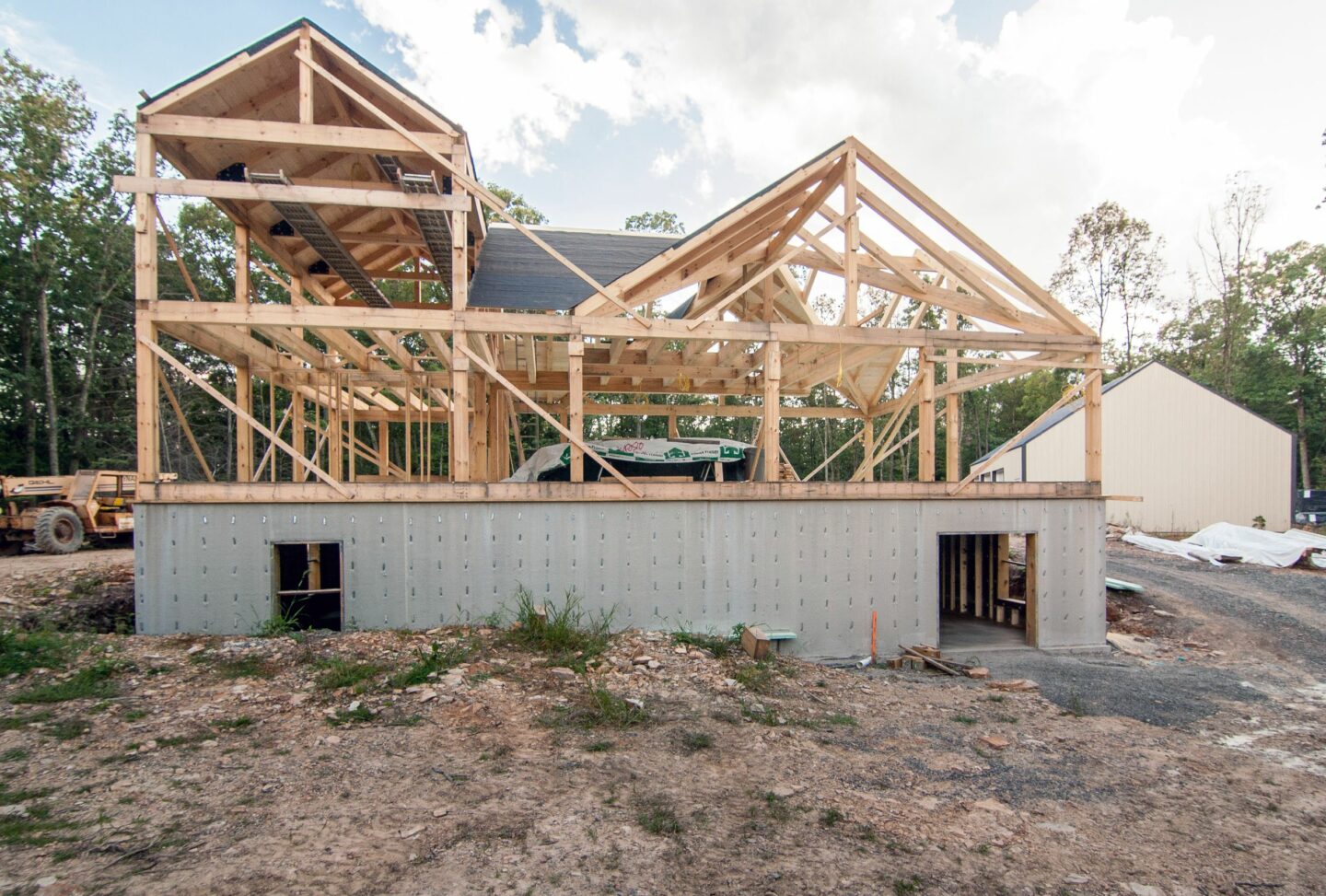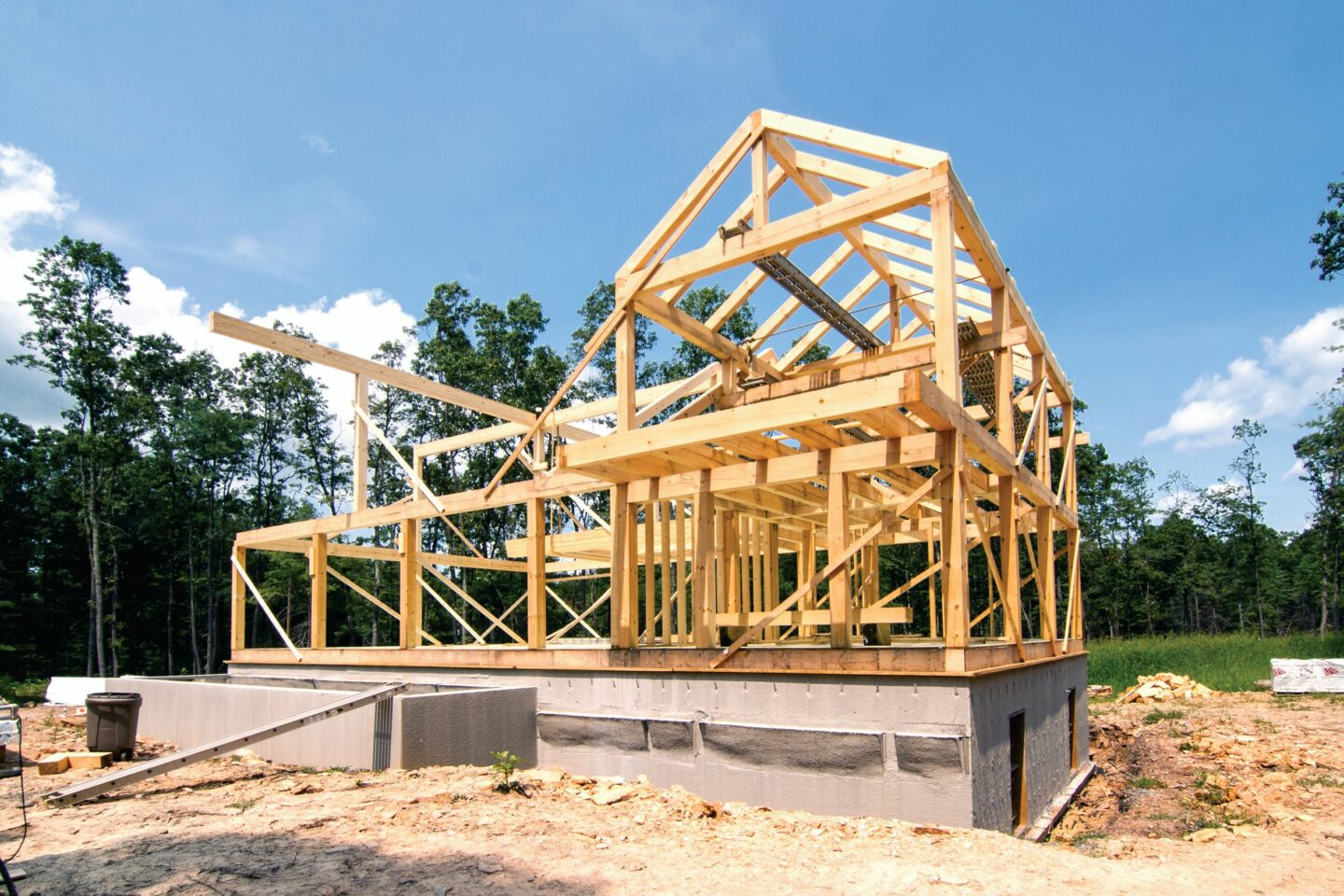Assembling the right players is critical to the successful process of building a log & timber home.
From the boardroom to the playing field, a successful team has to have the right group of people, with complementary knowledge and skill sets. The same holds true for a log & timber home—build a good team and the project will be successful.
Once the decision to build that dream home has been made and the notions of style and presentation are being considered, the next step involves the homeowner’s selection of a team that will make the idea tangible, the theoretical into reality. While the most critical member of the log & timber home construction team is the homeowner—the individual who describes the vision and the desired result of the project to the others—no successful effort can be realized without the contributions of each member.

“The client is the most critical member, as each has their own dreams and visions of what is important to them for their home,” observes Brad Neu, owner of Montana Log Homes. “That said, the team will vary depending on the client. For some it will start with an architect who will work with the client through the conceptual design phase then also assist them in selecting their log or timber supplier and general contractor. For many clients, however, it starts with their selection of the supplier.”
“They work with companies like Montana Log Homes,” Neu continues, “and we assist them in putting together a team that consists of the client, our in-house designers, and a general contractor. The general contractor in turn assembles the team that takes the project, after the design phase, through turnkey construction. The team will include everything from surveyors, if needed, to the final cleaners who prepare the home prior to move in. The many other team members may include excavation and foundation contractors, framing crews, flooring professionals, kitchen designers, cabinetmakers, masons, roofers, painters/stainers, lighting professionals, electricians, plumbers, and more.”

Wow! It takes a team, and the selection process is critical to success. Homeowners should pay close attention to the three main activities that occur during a project. “These are design, supply, build,” comments Robert Lambert, founder and president of Natural Element Homes. He sees the selection criteria as straightforward.
“Character, quality, ability, and price—in that order,” Lambert declares. “Spend enough time with each team member to get to know them well. Ask for and check references. Review work they have done for others and consider their overall record. Make sure you like working with them.”
Good advice! The process will indeed require months of communication, cooperation, and adaptability. “Building a new home can be a rewarding, challenging, scary, yet fun proposition,” agrees Chris Wood, vice president of sales at Hearthstone, Inc. “Building new is often creating something special that can be handed down for generations. Setting aside time for decisions, having finances for the unknown, matching expectations, and minimizing stress are all key essentials. If you are going to work together for a year or two, make sure you like and trust each other.”

Given that trust is a cornerstone of a log & timber home-building team, developing that trust is essential. Homeowners would do well to assess the need fully, anticipate setbacks or slowdowns, accept that certain circumstances may turn out to be beyond their control, and then study, evaluate, and get started.
Wood offers that the general steps in the team-building process may include such activities as selecting and buying the building site. “If you see a home you like, contact the log manufacturer or builder and get information. If the property has a challenging slope, weather, retaining walls, setbacks, etc., hire an architect or residential designer for a concept sketch for starters. Use the sketch or plan to assemble a team with ability and the right attitude. Then proceed with detailed plans for engineering, estimating, permitting, financing, and other tasks.”
Lambert interjects a word to the wise. “If any potential team member is lacking in any of the major criteria, this could be sufficient reason not to use them.” Readily available sources of information include the local home builders association, the Log and Timber Homes Council, trade magazines and shows, and the local building department.
Research and discernment are essential to the homeowner’s decision regarding the makeup of the team. “The best information will come from former clients of each team member,” reasons Lambert. “Feel free to ask for references and check them out. This is much more reliable than social media reviews and ratings, as many of these ratings can be from anonymous persons who have not actually participated with the team, but may simply have a negative perception. For example, some people can get offended if a team member provides pricing that is higher than the customer expects. The customer may have limited knowledge of costs, and they may feel upset when they see the numbers. They may then disparage the team member unjustifiably. Real former customers are the most reliable source for testimony about a team member.”

Like any worthwhile undertaking, developing a chemistry among team members is most helpful. Those who appreciate the challenges other team members face and the homeowner’s relative knowledge and understanding will fare better during the process, and obviously there should be fewer stumbling blocks, squabbles, or obstacles to completion.
According to Wood, a single attribute serves as a strong opening qualifier for prospective team members. “Attitude!” he advises. “The general contractor is ultimately responsible for making it all come together smoothly, timely, and within a targeted budget. If the builder is excited to try something new and isn’t threatened by ‘sharing the glory,’ that’s a start. Matching expectations, track record, and do they ‘play well together’ are really important factors. Being set in one’s way isn’t always good when trying something new or challenging.”
The steady, informed approach will lead a homeowner on the right path to team selection. Confidence in and among that team to execute the plan and satisfaction with the finished product should be the common goals of each member.

